Last week on the bloggo we reviewed a cool little guitar to MIDI application called MIDI Guitar 2. It should be called Guitar 2 MIDI, mostly because I call it that incorrectly 90% of the time. IRREGARDLESS, this is the apex of technology. This is the realization of Guitar 2 MIDI’s potential. This is MIDI GUITAR 2 EURORACK.
There’s a few pieces to this here puzzle, so lets see what pieces we got:
- Logic Pro X
- MIDI Guitar 2
- Digitakt
- Audio Interface with MIDI Out
- Yarns – MIDI to CV converter
- Modular Synth
The Digitakt is hooked up over USB to Logic Pro X. My audio/MIDI interface is sending MIDI out to Yarns, which is in turn sending CV from MIDI Guitar 2, clock and run signals from Logic Pro X all into my modular synth.
Now I’m out of breath.
So what are these things? What do they do? How do they do? These are the big questions we crush weekly at stevetravale.com (tell your friends!)
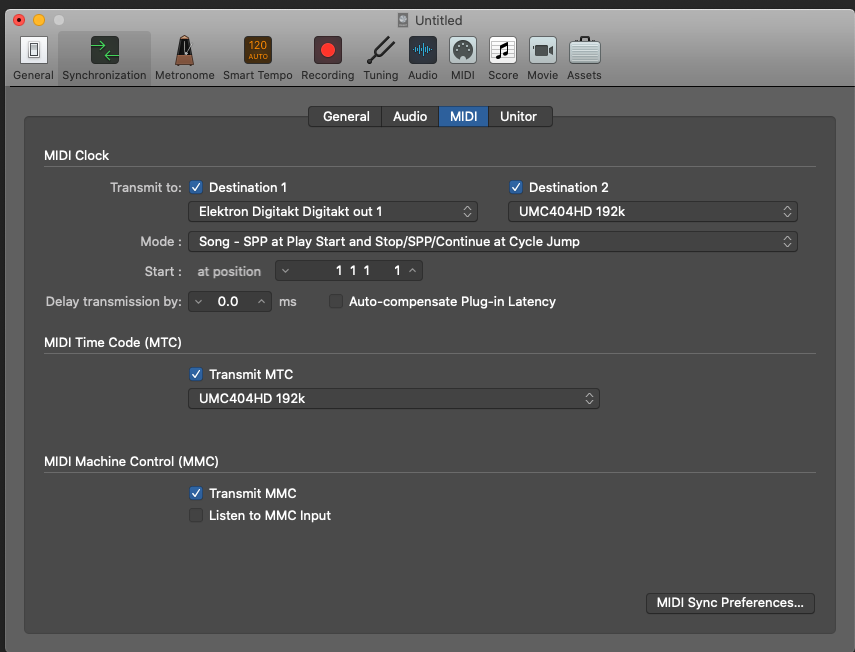
To start with, let’s talk DAW. Above are the MIDI Project settings I used for creating the jam your ears will be munching on shortly.
These settings allow the DAW to play/stop the Digitakt, as well as keep its tempo synced. I am also sending these MIDI messages out of my audio interface, which are then going to my MIDI to CV converter Yarns. This will allow Yarns to also pass the tempo coming out of Logic Pro X to my modular synth, keeping things nice and in sync.
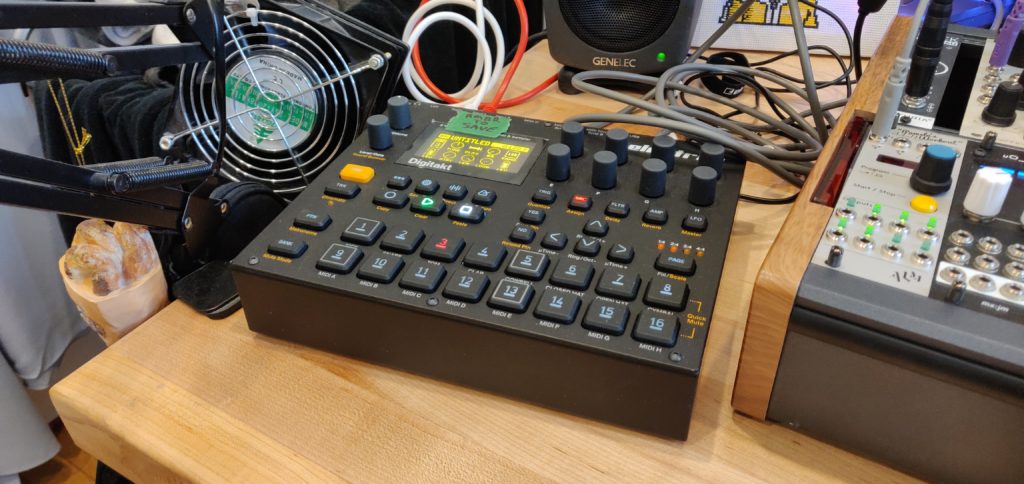
Actually, the Digitakt setup is simple as can be. Plugged it in over USB, turned on USB MIDI in the settings menu, and that was about it.
I also grabbed the left and right out on the Digitakt and threw that into my interface. Gimme’ a little “boom snap” to play the old gitbox to.
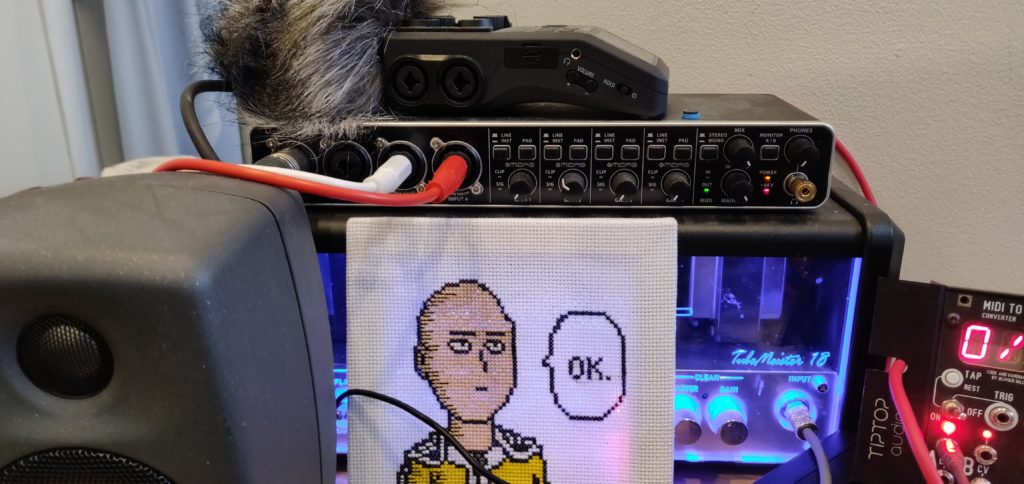
From here the audio/MIDI interface is taking all that gooey DAW/computer goodness and sending out into the whacky world of Eurorack.
But how do you ask? Well, with Yarns silly!
Yarns is a MIDI to CV converter, and this particular vintage was built right here on this blog. Check out the build diary of Advanced Yarns here!
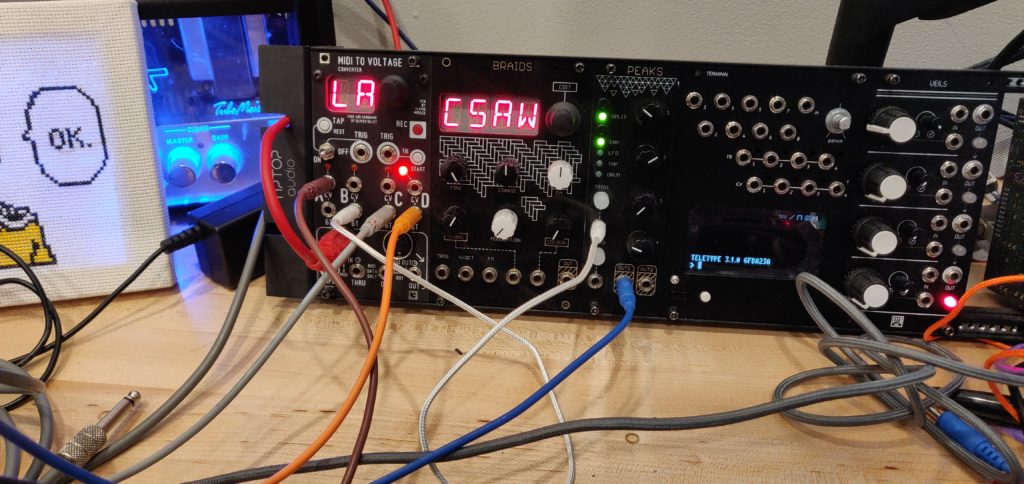
The Yarns setup wasn’t as simple. The issues stemmed from the fact that I wanted the tempo information from Logic Pro X to clock Pamela’s New Workout in my modular synth, while still sending the MIDI messages produced by Guitar 2 MIDI through the v/oct CV out. Thankfully, the module allows you to control exactly how your MIDI gets spit out the other end.
Also, thanks to some tips from Yarn’s creator, (which I will take credit for as it was discovered through fierce googling) the following settings worked perfectly for me in 1M mode:
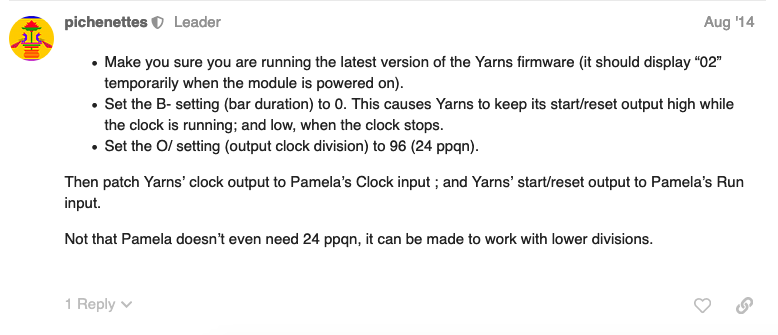
And boy did it work perfectly. The only addition was setting the Clock to EXT on Yarns so it did not use its own internal clock.
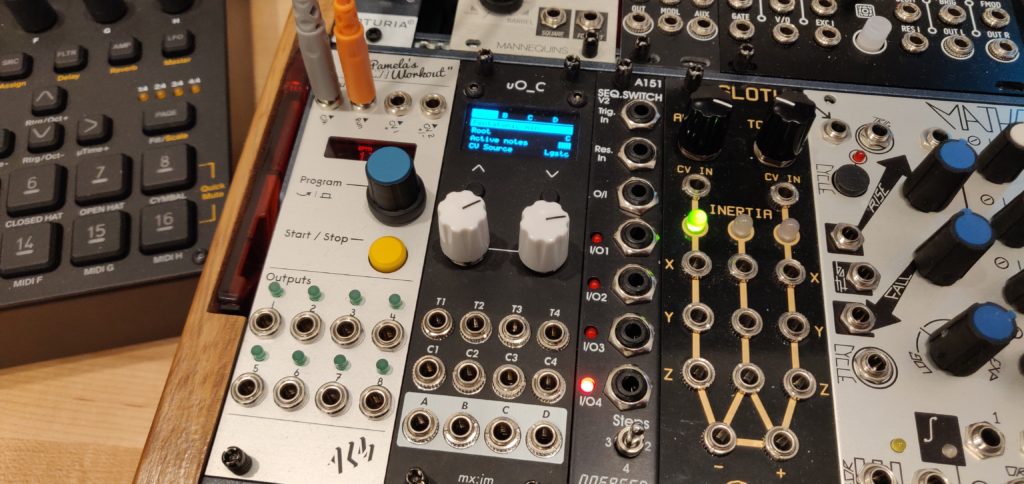
One other little thing on the modular side.
When a note is played over MIDI, Yarns will also send a trigger through the “B” output. Through the white cable (as you can see a couple images above), Yarns is triggering an envelope out of Peaks. This envelope is then used to shape the VCA the VCO is running through. This shaping gives the VCO that “plucked string” feel.
Or at least that was how things we’re being shaped, until I started using Mangrove with this setup, which has it’s own integrated sort of VCA called “Air”. Same deal, I just never would want to lie to you reader. My sweet, sweet reader.
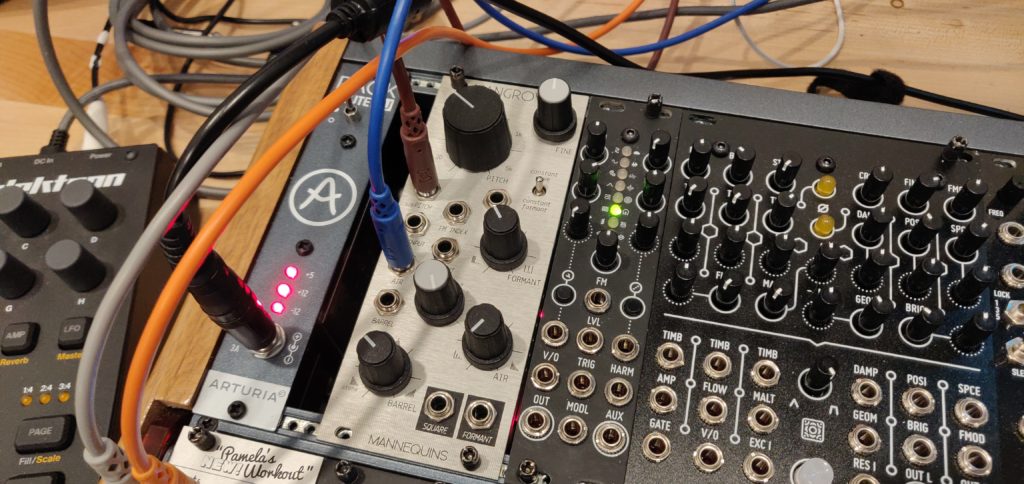
And finally, here are my settings for MIDI Guitar 2 for hooking into modular synths.
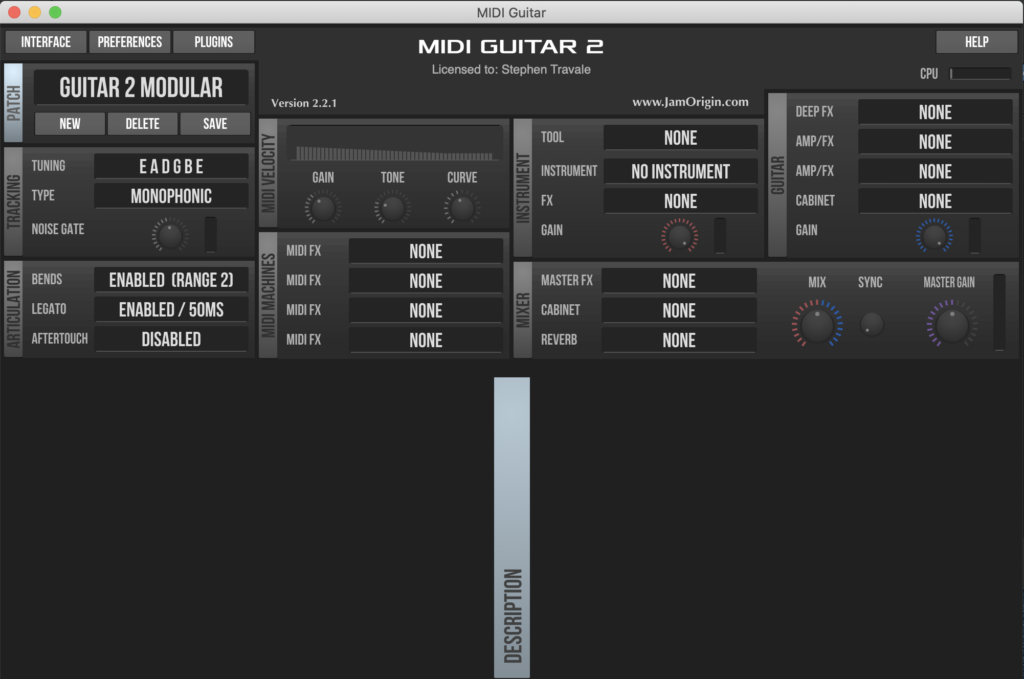
And that’s how you can get guitar hooked up to modular! Thanks for reading, hope to see you next week!
JUST KIDDING. First, let’s listen to the little jam loop I threw together to show how well a guitar can control modular synths. See if you can ear-spot the Mangrove being controlled by my guitar, and forgive the drawn out droney intro.
If it’s not immediately obvious, the riff in question is doubled with a guitar the second time around. That guitar riff was the raw audio used to control Mangrove, with a healthy does of distortion of course.
Here is the audio separated out from Mangrove, and the dry guitar signal used to control it, just to really hammer the point home.
Dry Guitar Signal
Mangrove Signal
And that’s ACTUALLY it for the week folks. Thanks for reading. If you made it this far the secret letter of the day is O.
See you next Sunday! Hopefully we will be building something again soon.
Maybe we’ll do a giveaway one day? Give one of these DIY modules a nice new home, and DRIVE SOME TRAFFIC. It’s all about that SEO on the world’s premiere DIY Eurorack Blog baby!….

